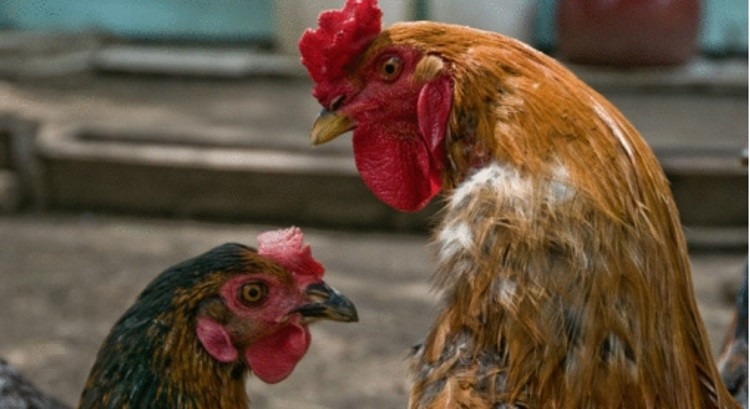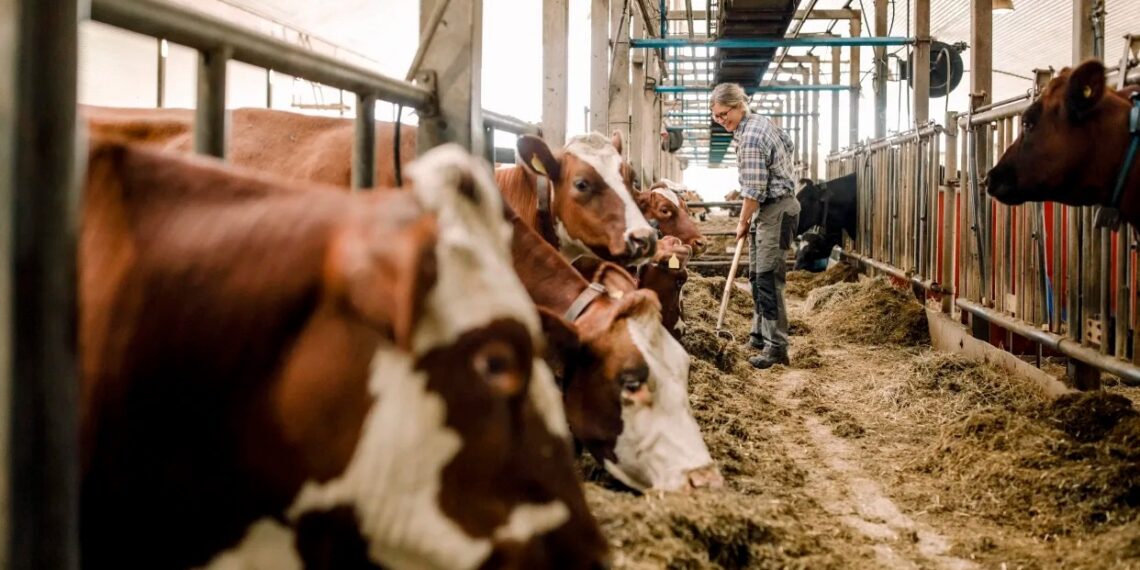
Following continued concerns about bird flu, the Food and Drug Administration (FDA) confirmed via testing that the commercial milk supply in the United States is safe. The new tests, which were done on milk samples across the country, confirmed that pasteurization effectively kills the bird flu virus, as no live virus was found in the samples. Additionally, tests on powdered infant formula and milk products for toddlers also came back negative for any viral fragments.
The FDA is also further testing retail samples from its study of 297 samples of dairy products from 38 states. “All samples with a PCR positive result are going through egg inoculation tests, a gold-standard for determining if infectious virus is present,” the FDA said in a statement.
Traces of bird flu have been found in 1 in 5 samples of pasteurized milk, sparking worry that the virus — also known as avian influenza — could be transmitted to humans. So far, only one person in the U.S. has caught bird flu, the second-ever case in the nation. The Centers for Disease Control and Prevention (CDC) has asked states to prepare for more bird flu cases by gearing up to test at-risk people for the virus but insists that the risk to the general public remains low, Reuters reports.
The one infected person is a dairy worker who contracted bird flu in Texas, where the virus has been spreading among cattle, as well as in Idaho, Kansas, Michigan, New Mexico, North Carolina, Ohio and South Dakota. Bird flu hasn’t spread to any other people so far, but it has been detected in wild birds, including several geese, in New York City parks and green spaces, according to a new study, and there are renewed fears about other mammals being infected.
How concerned should you be about bird flu, and what might this mean for the food supply? Here’s what you need to know.
What is bird flu?
Bird flu — clinically known as influenza A (H5N1) — is a variation of flu virus that spreads primarily among birds and poultry and can be highly contagious and even fatal among birds, according to the CDC. Occasionally, the virus will jump to other animals if they eat infected birds or drink water contaminated by the feces of infected birds, the CDC says. That has become more common in recent years. Viruses are constantly mutating, and the more they spread, the more they mutate. A recent family of variants may be particularly adept at infecting other animals, including cattle, according to the World Health Organization.
It’s rare for the virus to infect humans, and when it does happen, it’s usually confined to one person who was in close contact with an infected animal and doesn’t spread to others. Bird flu may cause mild to severe sickness in humans, and it has the potential to cause pneumonia and severe, sometimes fatal lung inflammation. Since 2020, there have been 26 cases in humans confirmed by the WHO, seven of which have been fatal.
Have people been infected?
The CDC continues to call for calm and considers the risk to the general public low, but, on Apr. 5, the agency requested that state health departments begin gearing up in case additional people are infected.
So far the U.S. Department of Agriculture (USDA) has confirmed that there are 12 infected dairy cattle herds in Texas, four in Kansas, six in each New Mexico and Michigan, two in Idaho and one each in North Carolina, Ohio and South Dakota. Cases in birds in New York City parks and green spaces have also been confirmed by Icahn School of Medicine at Mount Sinai researchers.
The infected person in Texas was diagnosed after developing conjunctivitis, or pink eye. It’s only the second-ever human case of bird flu in the U.S.; the first was a poultry farmworker who was infected in 2022 while culling infected birds and recovered after experiencing only mild fatigue. Eye inflammation is the only symptom of the person currently infected, and they’re receiving antiviral medication.
Other dairy and poultry farmworkers are the CDC’s main concern now. As of April 24, the CDC had tested 23 people for bird flu, and states with outbreaks were monitoring 44 people who were exposed to the virus, according to the New York Times. The agency has asked state health officials to take steps like making sure they have bird flu tests available to confirm possible infections. It also said health officials should stay in close contact with veterinarians and agriculture department officials and asked to be notified of any “challenges” states encounter.
While farmworkers are at the greatest risk because of their close and frequent proximity to potentially infected animals, the Icahn School of Medicine study authors warned that it’s not impossible for city dwellers to be exposed. “Our work highlights that the interface between animals and humans that may give rise to zoonotic infections” — germs that spread between animals and people — “or even pandemics is not limited to rural environments and commercial poultry operations but extends into the heart of our urban centers,” the researchers wrote.
What are the risks to humans?
For the general public, the risk remains low, the CDC says. Bird flu has never been very good at spreading from person to person, so it’s unlikely to become widespread. The virus would have to mutate in some specific, key ways to make that possible. The good news is that it hasn’t, according to preliminary testing of a sample of virus from the infected person, who has only mild symptoms.
What does it mean for our food and milk?
Testing of commercial milk — the kind sold in grocery stores — detected genetic remnants of the bird flu virus, which has infected both egg-laying chickens and dairy cows in the U.S., in about 20% of samples, according to the FDA. That doesn’t necessarily mean the milk can make you sick, but regulators are now performing additional tests to determine “if infectious virus is present,” the FDA said on April 25.
According to the FDA’s statement, while pasteurization — a sterilization process that kills bacteria and viruses — likely inactivates the virus — meaning that it should not be able to infect someone who drinks milk — it “is not expected to remove the presence of viral particles.” So far, the agency has “seen nothing that would change our assessment that the commercial milk supply is safe,” officials said in the statement. The USDA echoed that sentiment, maintaining that “that there is “no concern about the safety of the commercial milk supply because products are pasteurized before entering the market.”
Still, the USDA has stepped up efforts to stop bird flu from spreading. On April 24, the agency issued a federal order telling dairy farms to test any cattle being moved across state lines for bird flu. The agency had previously told farmers to test any cattle with symptoms and throw out milk from infected cows. And other countries are concerned: Colombia is now restricting the importation of beef and beef products from U.S. states with infected herds, becoming the first country to do so on April 15, Reuters reported.
Bird flu has also been found in unpasteurized milk, but you shouldn’t consume unpasteurized milk or cheese regardless, the CDC warns, because they carry risks of infections, like listeria. The CDC also notes that the risk of being infected from eating eggs is low, and properly cooking them would kill any virus anyway.
Farms are prohibited from selling products — including milk and eggs — from sick animals, so it’s unlikely that contaminated food would wind up on grocery store shelves. The most likely impact of the bird flu outbreak in animals on the food supply is rising prices. Egg prices have shot up as chickens have been culled or died, limiting the supply of eggs. Milk prices could see increases but are stable so far.
Are there bird flu vaccines and treatments?
Two candidate vaccines — drafts of what would become the shots — seem to be good matches for the current strain of bird flu, the Washington Post reports. The U.S. federal government has a stockpile of enough doses to vaccinate a fifth of the American population, officials told Barron’s. However, the vaccines are undergoing clinical testing, so it’s unclear how effective they will be. Antiviral drugs can also be used to treat bird flu, although the CDC says that some variations of bird flu first found in Asia aren’t as responsive to these treatments.
Dr. Arnold Monto, a professor emeritus of epidemiology at the University of Michigan and member of the FDA’s vaccine committee, tells Yahoo Life that the U.S.’s bird flu vaccines require adjuvants, ingredients that improve human’s immune responses. An official with the Department of Health and Human Services also told the Washington Post that components for the vaccines are being tested, and it would likely take weeks to months for them to be ready for widespread distribution. Monto adds that the vaccine would also likely be given to only those at high risk — poultry and dairy farmworkers — since there’s no evidence that bird flu spreads among humans.
How can I avoid bird flu?
Avoid close or prolonged contact with wild birds, cattle or any other animal suspected of being infected. The CDC also recommends steering clear of surfaces that may be contaminated with raw milk, animal feces, litter or anything else that might have crossed paths with an infected animal.
Cooking poultry and eggs to an internal temperature of 165˚F will kill off any virus. It’s also recommended for milk drinkers to consume only pasteurized milk to prevent contracting bird flu or other viruses or bacteria from raw foods, and to avoid raw or undercooked foods sourced from animals that may be infected with bird flu.
This article was originally published on April 4, 2024. It has since been updated.









